Opinion & Analysis
How your shoulder blades can affect your club face: Part 2
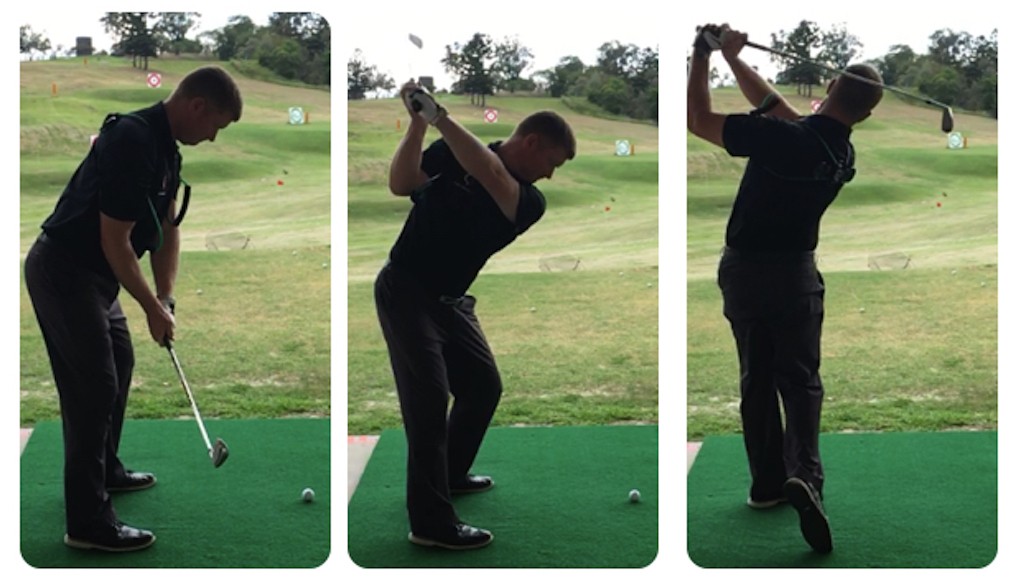
This article was co-authored with Chris Gibson, an Australian AAA-rated golf professional. His teaching philosophy focuses on simplicity and longevity in the game, providing help for golfers at all levels. He focuses on interpreting information from technology and applying it in the simplest way possible to help his students
Before you begin reading this article, make sure you have read Part 1 in this series, otherwise not much of this is going to make sense! Here, in Part 2, Chris and I are going to offer solutions that will help you to develop better stability and control of those all-important shoulder blades.
But first, in response to requests for a more detailed photographic explanation, we will also show you the good and bad of scapula-positioning when standing upright and in a golf setup. The two models featured are an underdeveloped teen who has poor scapula control, and a top-100 player in the world who has five years of scapula stability training under his belt (in addition to other training).
You can see that in Pic 1; the teen had a lack of bulk and activation in the muscles surrounding the scapula and it appears to poke through the skin. This leads to the right shoulder sitting very low and internally rotated at set up (Pics 2 and 3), which as we suggested in Part 1 of this article, makes it ultimately more difficult to control the clubface consistently. Where as the more trained athlete (whilst still not perfect: right shoulder is low) holds his scapula better in standing and set up, which we believe gives him a better chance to repeatedly control the clubface efficiently in his action.
Pic 1
Pic 2
Pic 3
Hopefully that clears things up for you and we can finally offer you a solution to training those scaps. The scapula is notoriously difficult to control; instinctively, we generally have poor awareness and usually aren’t very strong or stable in the muscles that surround it. Training of these muscles can be be tricky and complicated, so we have tried to simplify it for you by delivering two sets of simple exercises that we use as a starting point for many of the players (elite or otherwise) that we work with.
These simple drills can be done using either a piece of rubber tubing or more ideally, the training piece you will see in the photos called the Gravity Fit Thoracic Pro.
We have created one mini program for home and one mini program for the practice range. The movements are simple and don’t require any kind of in-depth anatomical knowledge to perform them correctly. We have supplied photos and descriptions of how to perform the movements, but also welcome questions and queries.
Home Exercises
Circuit – 3 Rounds – 30 seconds of rest between exercises.
- Tubing Push Out – Thoracic Pro – 12 reps
- Wall Push Up – Thoracic Pro – 12 reps
- Set Up Posture Drill – Thoracic Pro – 45 secs
- Waist to Waist Turns – Thoracic Pro – 10 reps
1. Tubing Push Out
- Purpose: Training scapula awareness, control and endurance
- Method: Stand tall, press arms forward keeping shoulder blades and spine connected to back paddle, turn palms up as you near end range. Control back to start position and repeat.
2. Wall Push Up
- Purpose: Training scapula awareness, control and endurance.
- Method: Stand tall, lower your chest toward the wall keeping your shoulder blades and spine connected to back paddle. Control back to start position and repeat.
3. Set Up Posture Drill
- Purpose: Training scapula awareness, control and endurance in golf setup.
- Method: In golf set up with hands in tubing, turn shoulders/elbows/hands outwards. Gently pulse hands against tubing.
4. Waist to Waist Turns
Purpose: Training scapula awareness, control and endurance in rotation movement pattern.
Method: In golf setup with hands in tubing, turn shoulders/elbows/hands outwards. Turn into backswing then turn into follow through. Maintain shoulder/elbow/hand positioning all the way through.
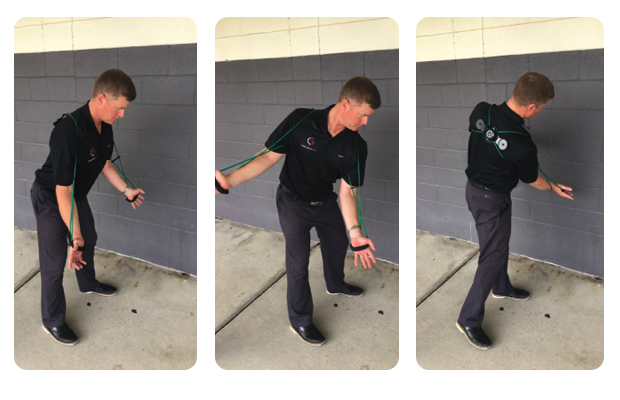 Range Drills
Range Drills
Circuit – 10 rounds – 20 secs rest between drills
- Set Up Posture Drill – Thoracic Pro – 20 secs
- Waist to Waist Turns – Thoracic Pro – 10 reps
- Preset, Backswing to Impact – 5 reps
- Preset, backswing to hit ball – 3 reps
1. Set Up Posture Drill
- Purpose: Training scapula awareness, control and endurance in golf setup.
- Method: In golf set up with hands in tubing, turn shoulders/elbows/hands outwards. Gently pulse hands against tubing.
2. Waist to Waist Turns
- Purpose: Training scapula awareness, control and endurance in rotation movement pattern.
- Method: In golf set up with hands in tubing, turn shoulders/elbows/hands outwards. Turn into backswing then turn into follow through. Maintain shoulder/elbow/hand positioning all the way through.
3. Preset, Backswing to Impact
- Purpose: Practice first move, top of backswing and back to impact in controlled manner. Opportunity to discover what positions feel like with quality scapular control under low load (moving slowly).
- Method: Set club parallel to ground with good shoulder position (connected scapulae), slowly swing up to top of 3/4 backswing and back to impact.
4. Preset, backswing to hit ball
- Purpose: Taking the movement patterns and control of the scapula and applying it to hitting balls.
- Method: Set club parallel to ground with good shoulder position (connected scapulae), complete rest of swing and impact at normal speed
The equipment featured in the exercises is called a Gravity Fit Thoracic Pro. It was conceived and designed by a world leading scientist in the field of physiotherapy. Designed for the specific task of training stability and strength in the shoulder girdle and scapula, it also works really nicely when applying that quality to dynamic rotation in a golf swing context. We love using it with our students and you can get one here: www.golffitproshop.com.
- LIKE45
- LEGIT10
- WOW3
- LOL1
- IDHT1
- FLOP1
- OB1
- SHANK32
Opinion & Analysis
The Wedge Guy: What really makes a wedge work? Part 1

Of all the clubs in our bags, wedges are almost always the simplest in construction and, therefore, the easiest to analyze what might make one work differently from another if you know what to look for.
Wedges are a lot less mysterious than drivers, of course, as the major brands are working with a lot of “pixie dust” inside these modern marvels. That’s carrying over more to irons now, with so many new models featuring internal multi-material technologies, and almost all of them having a “badge” or insert in the back to allow more complex graphics while hiding the actual distribution of mass.
But when it comes to wedges, most on the market today are still single pieces of molded steel, either cast or forged into that shape. So, if you look closely at where the mass is distributed, it’s pretty clear how that wedge is going to perform.
To start, because of their wider soles, the majority of the mass of almost any wedge is along the bottom third of the clubhead. So, the best wedge shots are always those hit between the 2nd and 5th grooves so that more mass is directly behind that impact. Elite tour professionals practice incessantly to learn to do that consistently, wearing out a spot about the size of a penny right there. If impact moves higher than that, the face is dramatically thinner, so smash factor is compromised significantly, which reduces the overall distance the ball will fly.
Every one of us, tour players included, knows that maddening shot that we feel a bit high on the face and it doesn’t go anywhere, it’s not your fault.
If your wedges show a wear pattern the size of a silver dollar, and centered above the 3rd or 4th groove, you are not getting anywhere near the same performance from shot to shot. Robot testing proves impact even two to three grooves higher in the face can cause distance loss of up to 35 to 55 feet with modern ‘tour design’ wedges.
In addition, as impact moves above the center of mass, the golf club principle of gear effect causes the ball to fly higher with less spin. Think of modern drivers for a minute. The “holy grail” of driving is high launch and low spin, and the driver engineers are pulling out all stops to get the mass as low in the clubhead as possible to optimize this combination.
Where is all the mass in your wedges? Low. So, disregarding the higher lofts, wedges “want” to launch the ball high with low spin – exactly the opposite of what good wedge play requires penetrating ball flight with high spin.
While almost all major brand wedges have begun putting a tiny bit more thickness in the top portion of the clubhead, conventional and modern ‘tour design’ wedges perform pretty much like they always have. Elite players learn to hit those crisp, spinny penetrating wedge shots by spending lots of practice time learning to consistently make contact low in the face.
So, what about grooves and face texture?
Grooves on any club can only do so much, and no one has any material advantage here. The USGA tightly defines what we manufacturers can do with grooves and face texture, and modern manufacturing techniques allow all of us to push those limits ever closer. And we all do. End of story.
Then there’s the topic of bounce and grinds, the most complex and confusing part of the wedge formula. Many top brands offer a complex array of sole configurations, all of them admittedly specialized to a particular kind of lie or turf conditions, and/or a particular divot pattern.
But if you don’t play the same turf all the time, and make the same size divot on every swing, how would you ever figure this out?
The only way is to take any wedge you are considering and play it a few rounds, hitting all the shots you face and observing the results. There’s simply no other way.
So, hopefully this will inspire a lively conversation in our comments section, and I’ll chime in to answer any questions you might have.
And next week, I’ll dive into the rest of the wedge formula. Yes, shafts, grips and specifications are essential, too.
- LIKE21
- LEGIT6
- WOW1
- LOL1
- IDHT2
- FLOP2
- OB1
- SHANK1
Golf's Perfect Imperfections
Golf’s Perfect Imperfections: Amazing Session with Performance Coach Savannah Meyer-Clement

In this week’s episode, we spent some time with performance coach Savannah Meyer-Clement who provides many useful insights that you’ll be able to implement on the golf course.
- LIKE0
- LEGIT0
- WOW0
- LOL0
- IDHT0
- FLOP0
- OB0
- SHANK0
19th Hole
Vincenzi’s 2024 RBC Heritage betting preview: Patrick Cantlay ready to get back inside winner’s circle

Just a two-hour drive from Augusta National, the PGA TOUR heads to Harbour Town Golf Links in Hilton Head Island, S.C. Hilton Head Island is a golfer’s paradise and Harbour Town is one of the most beautiful and scenic courses on the PGA TOUR.
Harbour Town Golf Links is a par-71 that measures 7,121 yards and features Bermuda grass greens. A Pete Dye design, the course is heavily tree lined and features small greens and many dog legs, protecting it from “bomb-and-gauge” type golfers.
The field is loaded this week with 69 golfers with no cut. Last year was quite possibly the best field in RBC Heritage history and the event this week is yet another designated event, meaning there is a $20 million prize pool.
Most of the big names on the PGA Tour will be in attendance this week with the exceptions of Hideki Matsuyama and Viktor Hovland. Additionally, Webb Simpson, Shane Lowry, Gary Woodland and Kevin Kisner have been granted sponsors exemptions.
Past Winners at Harbour Town
- 2023: Matt Fitzpatrick (-17)
- 2022: Jordan Spieth (-13)
- 2021: Stewart Cink (-19)
- 2020: Webb Simpson (-22)
- 2019: CT Pan (-12)
- 2018: Sotoshi Kodaira (-12)
- 2017: Wesley Bryan (-13)
- 2016: Branden Grace (-9)
- 2015: Jim Furyk (-18)
In this article and going forward, I’ll be using the Rabbit Hole by Betsperts Golf data engine to develop my custom model. If you want to build your own model or check out all of the detailed stats, you can sign up using promo code: MATTVIN for 25% off any subscription package (yearly is best value).
Key Stats For Harbour Town
Let’s take a look at key metrics for Harbour Town Golf Links to determine which golfers boast top marks in each category over their past 24 rounds.
Strokes Gained: Approach
Strokes Gained: Approach is exceedingly important this week. The greens at Harbour Town are about half the size of PGA TOUR average and feature the second-smallest greens on the tour. Typical of a Pete Dye design, golfers will pay the price for missed greens.
Total SG: Approach Over Past 24 Rounds
- Scottie Scheffler (+1.27)
- Tom Hoge (+1.27)
- Corey Conners (+1.16)
- Austin Eckroat (+0.95)
- Cameron Young (+0.93)
Good Drive %
The fairways at Harbour Town are tree lined and feature many dog legs. Bombers tend to struggle at the course because it forces layups and doesn’t allow long drivers to overpower it. Accuracy is far more important than power.
Good Drive % Over Past 24 Rounds
- Brice Garnett (88.8%)
- Shane Lowry (+87.2%)
- Akshay Bhatia (+86.0%)
- Si Woo Kim (+85.8%)
- Sepp Straka (+85.1%)
Strokes Gained: Total at Pete Dye Designs
Pete Dye specialists tend to play very well at Harbour Town. Si Woo Kim, Matt Kuchar, Jim Furyk and Webb Simpson are all Pete Dye specialists who have had great success here. It is likely we see some more specialists near the top of the leaderboard this week.
SG: TOT Pete Dye per round over past 36 rounds:
- Xander Schauffele (+2.27)
- Scottie Scheffler (+2.24)
- Ludvig Aberg (+2.11)
- Brian Harman (+1.89)
- Sungjae Im (+1.58)
4. Strokes Gained: Short Game (Bermuda)
Strokes Gained: Short Game factors in both around the green and putting. With many green-side bunkers and tricky green complexes, both statistics will be important. Past winners — such as Jim Furyk, Wes Bryan and Webb Simpson — highlight how crucial the short game skill set is around Harbour Town.
SG: SG Over Past 24 Rounds
- Jordan Spieth (+1.11)
- Taylor Moore (+1.02)
- Wyndham Clark (+0.98)
- Mackenzie Hughes (+0.86)
- Andrew Putnam (+0.83)
5. Greens in Regulation %
The recipe for success at Harbour Town Golf Links is hitting fairways and greens. Missing either will prove to be consequential — golfers must be in total control of the ball to win.
Greens in Regulation % over past 24 rounds:
- Brice Garnett (+75.0%)
- Scottie Scheffler (+69.9%)
- Corey Conners (+69.0%)
- Shane Lowry (+68.3%)
- Patrick Rodgers (+67.6%)
6. Course History
Harbour Town is a course where players who have strong past results at the course always tend to pop up.
Course History over past 24 rounds:
- Patrick Cantlay (+2.34)
- Cam Davis (+2.05)
- J.T. Poston (+1.69)
- Justin Rose (+1.68)
- Tommy Fleetwood (+1.59)
The RBC Heritage Model Rankings
Below, I’ve compiled overall model rankings using a combination of the five key statistical categories previously discussed — SG: Approach (24%), Good Drives (20%), SG: SG (14%), SG: Pete Dye (14%), GIR (14%), and Course History (14%)
- Shane Lowry
- Russell Henley
- Scottie Scheffler
- Xander Schauffele
- Corey Conners
- Wyndham Clark
- Christiaan Bezuidenhout
- Matt Fitzpatrick
- Cameron Young
- Ludvig Aberg
2024 RBC Heritage Picks
Patrick Cantlay +2000 (FanDuel)
With the exception of Scottie Scheffler, the PGA Tour has yet to have any of their star players show peak form during the 2024 season. Last week, Patrick Cantlay, who I believe is a top-5 players on the PGA Tour, took one step closer to regaining the form that’s helped him win eight events on Tour since 2017.
Cantlay limped into the Masters in poor form, but figured it out at Augusta National, finishing in a tie for 20th and ranking 17th for the week in Strokes Gained: Ball Striking. The former FedEx Cup champion will now head to one of his favorite golf courses in Harbour Town, where he’s had immaculate results over the years. In his six trips to the course, he’s only finished worse than 7th one time. The other finishes include three third places (2017, 2019, 2023) and one runner-up finish (2022). In his past 36 rounds at Harbour Town, Cantlay ranks 1st in Strokes Gained: Total per round at the course by a wide margin (+2.36).
Cantlay is winless since the 2022 BMW Championship, which is far too long for a player of his caliber. With signs pointing to the 32-year-old returning to form, a “signature event” at Harbour Town is just what he needs to get back on the winning track.
Tommy Fleetwood +3000 (FanDuel)
I truly believe Tommy Fleetwood will figure out a way to win on American soil in 2024. It’s certainly been a bugaboo for him throughout his career, but he is simply too talented to go another season without winning a PGA Tour event.
At last week’s Masters Tournament, Fleetwood made a Sunday charge and ended up finishing T3 in the event, which was his best ever finish at The Masters. For the week, the Englishman ranked 8th in the field in Strokes Gained: Approach, 10th in Strokes Gained: Ball Striking and 16th in Strokes Gained: Putting.
Harbour Town is a perfect layout for Fleetwood, and he’s had relative success at this Pete Dye design in the past. In his four trips to the course, he’s finished inside of the top 25 three times, with his best finish, T10, coming in 2022. The course is pretty short and can’t be overpowered, which gives an advantage to more accurate players such as Fleetwood. Tommy ranks 8th in the field in Good Drive % and should be able to plot his way along this golf course.
The win is coming for Tommy lad. I believe there’s a chance this treasure of a golf course may be the perfect one for him to finally break through on Tour.
Cameron Young +3300 (FanDuel)
Cameron Young had a solid Masters Tournament last week, which is exactly what I’m looking for in players who I anticipate playing well this week at the RBC Heritage. He finished in a tie for 9th, but never felt the pressure of contending in the event. For the week, Young ranked 6th in Strokes Gained: Off the Tee and 6th in Strokes Gained: Ball Striking.
Despite being one of the longest players off the tee on the PGA Tour, Young has actually played some really good golf on shorter tracks. He finished T3 at Harbour Town in 2023 and ranks 20th in the field in Good Drive% and 16th in Greens in Regulation in his past 24 rounds. He also has strong finishes at other shorter courses that can take driver out of a players hand such as Copperhead and PGA National.
Young is simply one of the best players on the PGA Tour in 2024, and I strongly believe has what it takes to win a PGA Tour event in the very near future.
Corey Conners +5500 (FanDuel)
Corey Conners has had a disappointing year thus far on the PGA Tour, but absolutely loves Harbour Town.
At last week’s Masters Tournament, the Canadian finished T30 but ranked 20th in the field in Strokes Gained: Approach. In his past 24 rounds, Conners ranks 3rd in the field in Strokes Gained: Approach, 3rd in Greens in Regulation % and 24th in Good Drive %.
In Conners’ last four trips to Harbour Town, his worst finish was T31, last season. He finished T4 in 2021, T12 in 2022 and ranks 8th in Strokes Gained: Total at the course over his past 36 rounds.
Conners hasn’t been contending, but his recent finishes have been encouraging as he has finished in the top-25 in each of his past three starts prior to The Masters, including an impressive T13 at The PLAYERS. His recent improvement in ball striking as well as his suitability for Harbour Town makes Conners a high upside bet this week.
Shane Lowry (+7500) (FanDuel)
When these odds were posted after Lowry was announced in the field, I have to admit I was pretty stunned. Despite not offering much win equity on the PGA Tour over the last handful of years, Shane Lowry is still a top caliber player who has the ability to rise to the top of a signature event.
Lowry struggled to score at The Masters last week, but he actually hit the ball really well. The Irishman ranked 1st for Strokes Gained: Approach on the week and 7th in Strokes Gained: Ball Striking. As usual, it was the putter that let him down, as he ranked 60th in the field in Strokes Gained: Putting.
Harbour Town is most definitely one of Lowry’s favorite courses on the PGA Tour. In his six starts there, he’s finished in the top 10 three times, including third twice. Lowry is sensational at Pete Dye designs and ranks 7th in Strokes Gained: Total in his past 36 rounds on Dye tracks.
Lowry is perfect for Harbour Town. In his past 24 rounds, he ranks 5th in Strokes Gained: Approach, 2nd in Good Drive% and 5th in Green in Regulation %. If he figures it out on the greens, Shane could have his first win in America since 2015.
Lucas Glover +12000 (FanDuel)
This is one of my weekly “bet the number” plays as I strongly believe the odds are just too long for a player of Glover’s caliber. The odds have been too long on Glover for a few weeks now, but this is the first event that I can get behind the veteran being able to actually contend at.
Glover is quietly playing good golf and returning to the form he had after the understandable regression after his two massive victories at the end of 2023. He finished T20 at The Masters, which was his best ever finish at Augusta National. For the week, Lucas ranked 18th for Strokes Gained: Approach and 20th in Strokes Gained: Ball Striking.
Over his past 24 rounds, Glover ranks 9th in Strokes Gained: Approach and 13th in Good Drive %. Harbour Town is a short course that the 44-year-old will be able to keep up with the top players on Tour off the tee. He’s played the course more than 20 times, with mixed results. His best finishes at Harbour Town include a T7 in 2008, but recently has a finish of T21 in 2020.
Glover has proven he can contend with the stars of the Tour on any given week, and this number is flat out disrespectful.
- LIKE30
- LEGIT5
- WOW2
- LOL1
- IDHT1
- FLOP2
- OB0
- SHANK2
-

 19th Hole1 week ago
19th Hole1 week agoDave Portnoy places monstrous outright bet for the 2024 Masters
-

 19th Hole3 weeks ago
19th Hole3 weeks agoThings got heated at the Houston Open between Tony Finau and Alejandro Tosti. Here’s why
-

 19th Hole1 week ago
19th Hole1 week agoTiger Woods arrives at 2024 Masters equipped with a putter that may surprise you
-

 19th Hole2 weeks ago
19th Hole2 weeks agoReport: Tiger Woods has ‘eliminated sex’ in preparation for the 2024 Masters
-

 19th Hole5 days ago
19th Hole5 days agoTwo star names reportedly blanked Jon Rahm all week at the Masters
-

 19th Hole4 days ago
19th Hole4 days agoNeal Shipley presser ends in awkward fashion after reporter claims Tiger handed him note on 8th fairway
-

 19th Hole3 days ago
19th Hole3 days agoReport: LIV Golf identifies latest star name they hope to sign to breakaway tour
-

 19th Hole2 weeks ago
19th Hole2 weeks agoAddiction, spinal fusion, and scam artists – Everything Anthony Kim revealed in candid interview with David Feherty

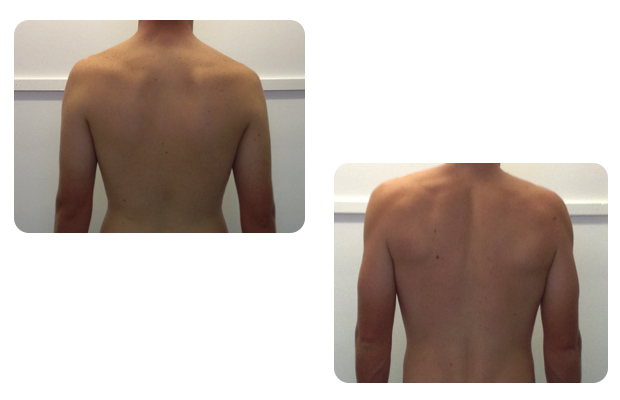
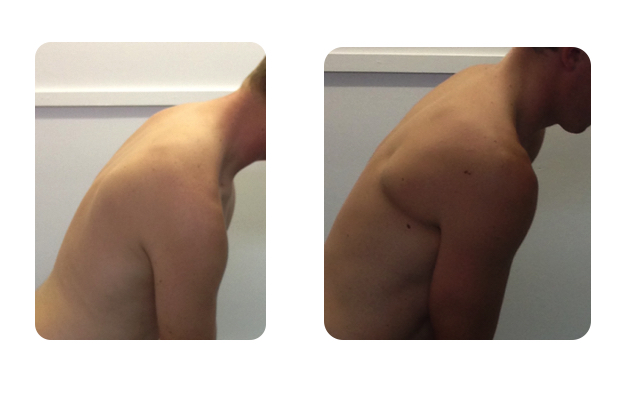
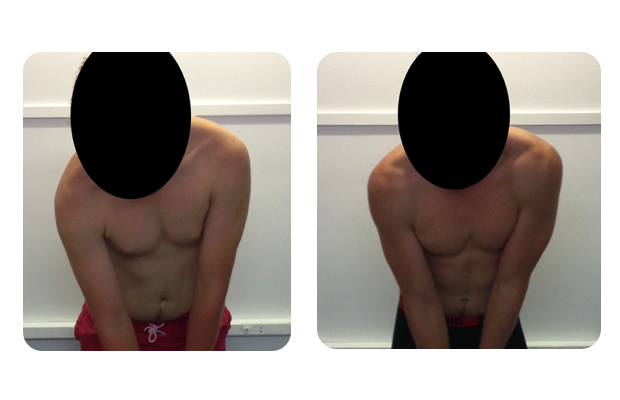
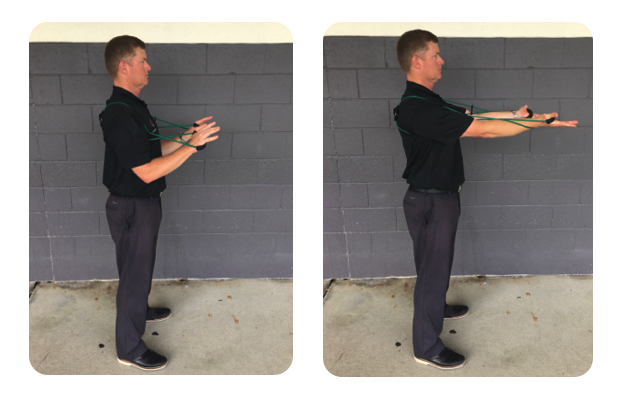
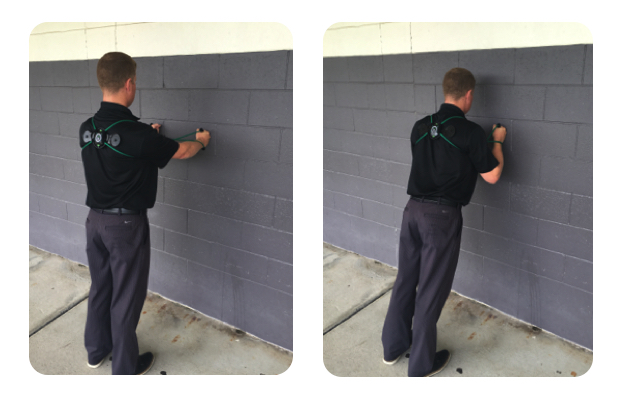
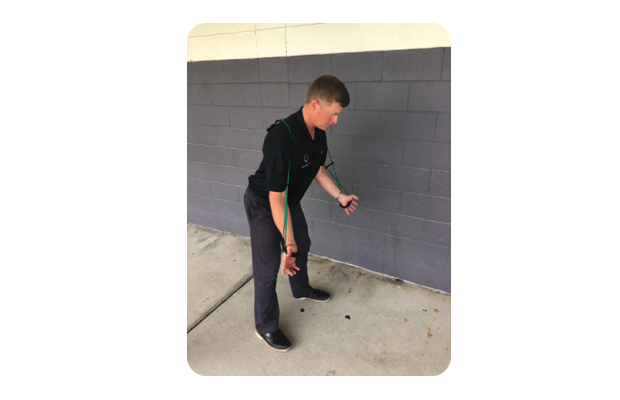
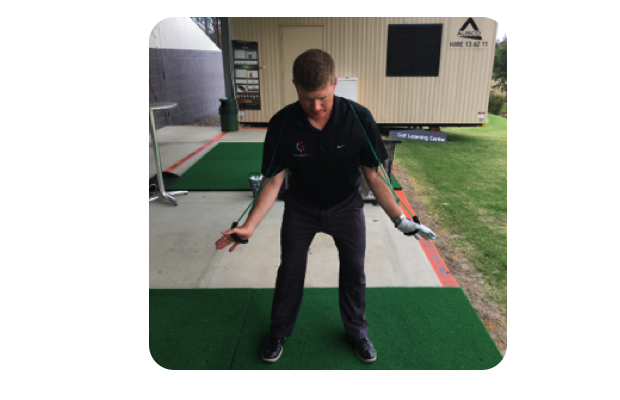
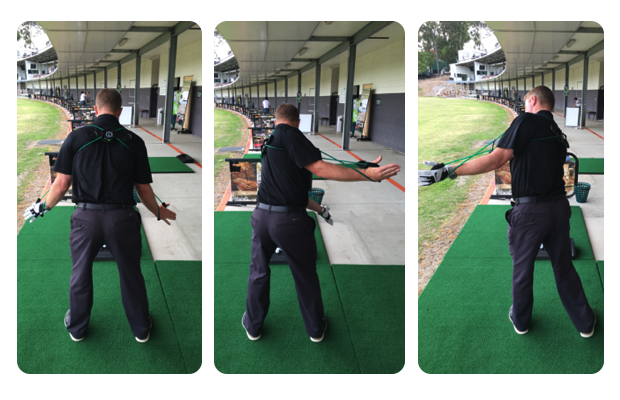
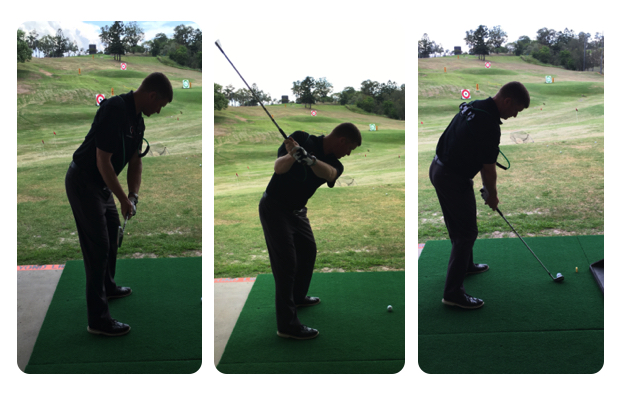
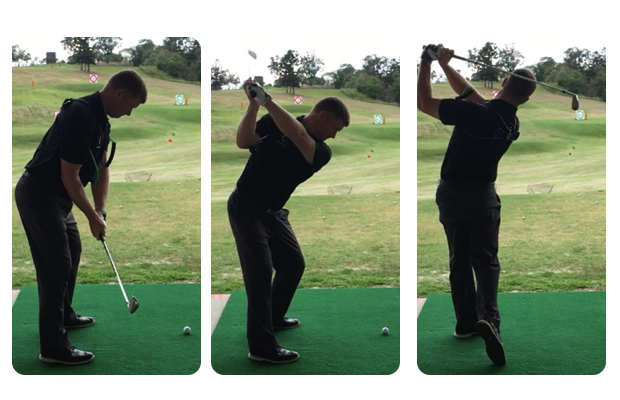



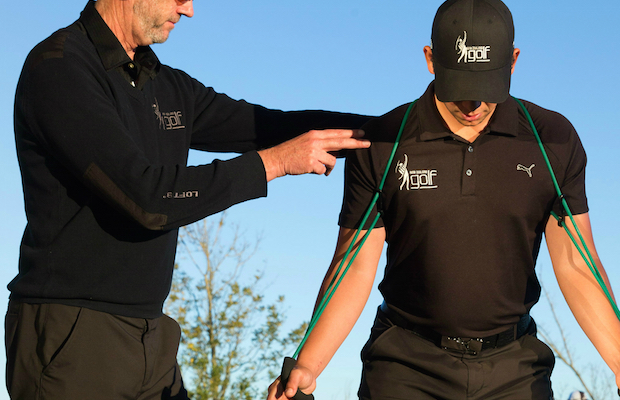
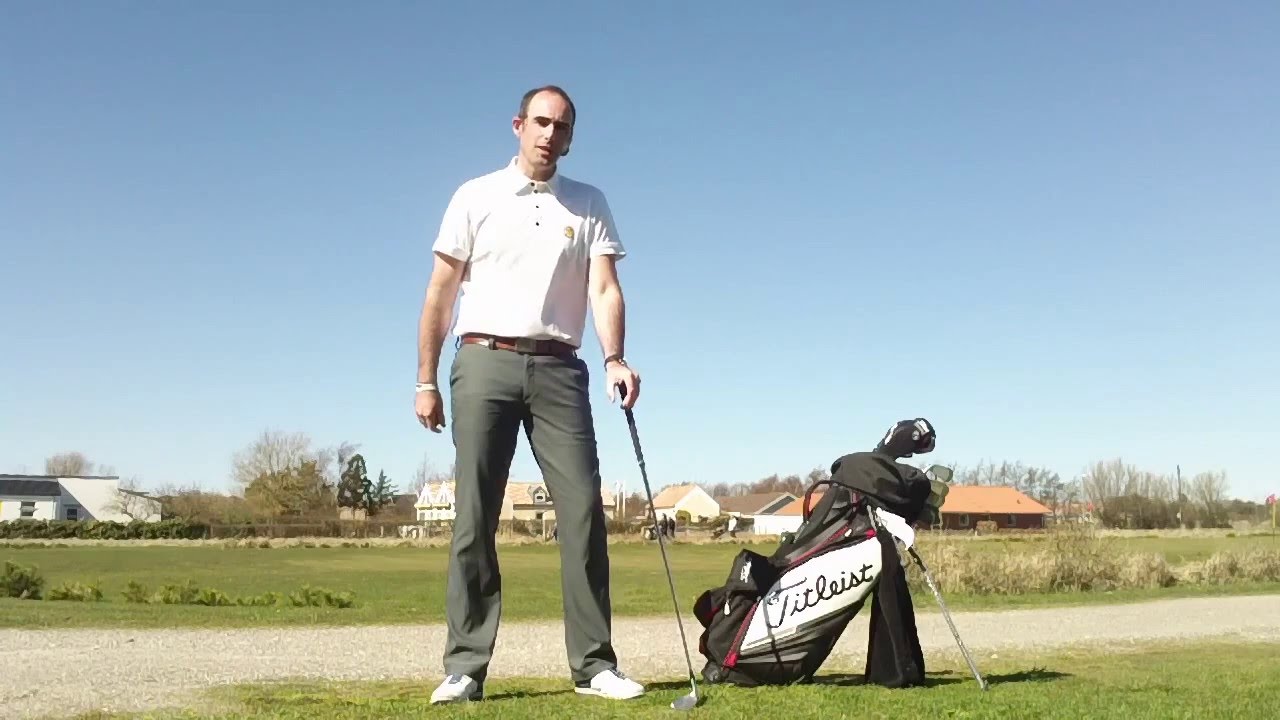
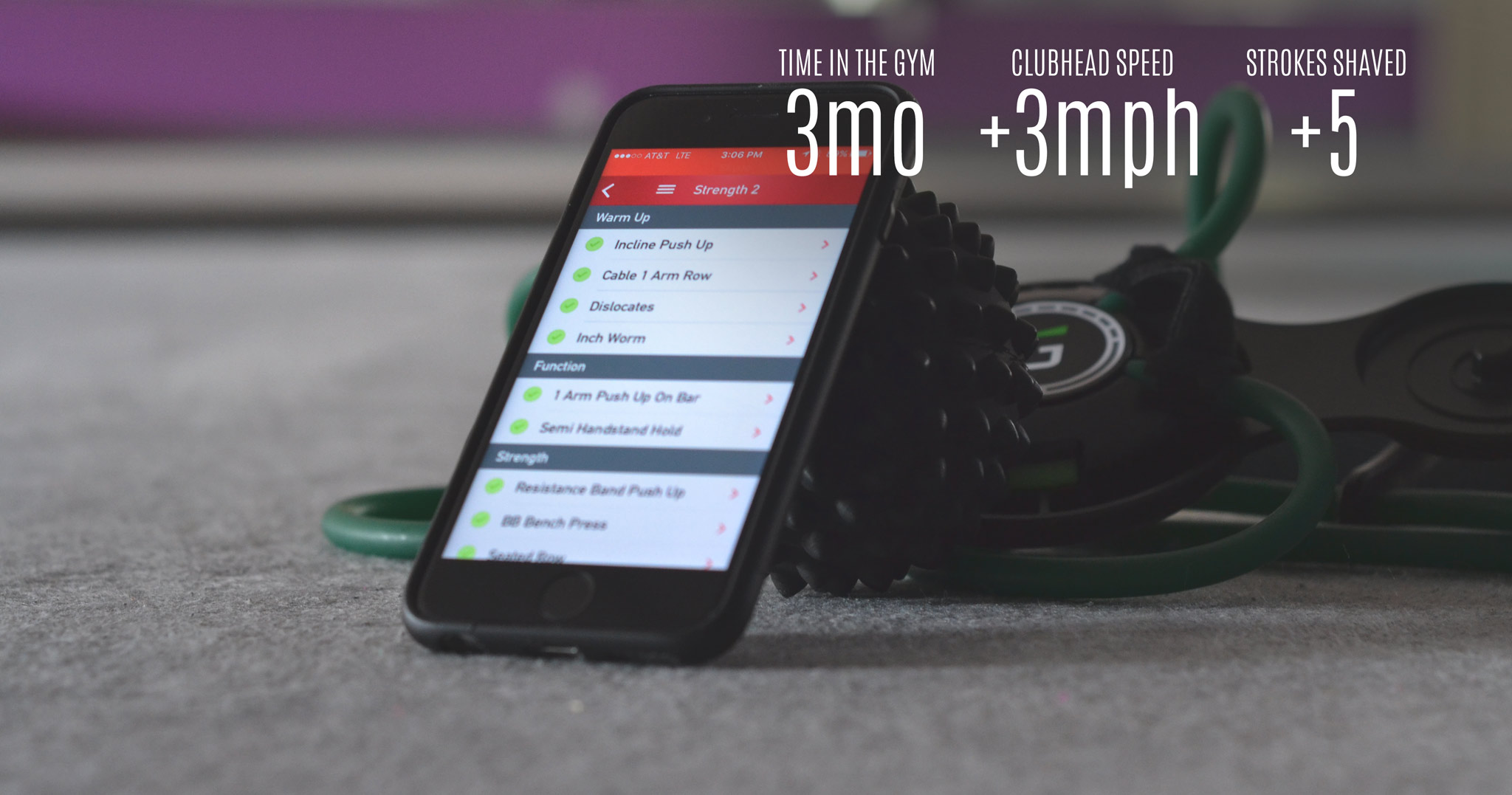
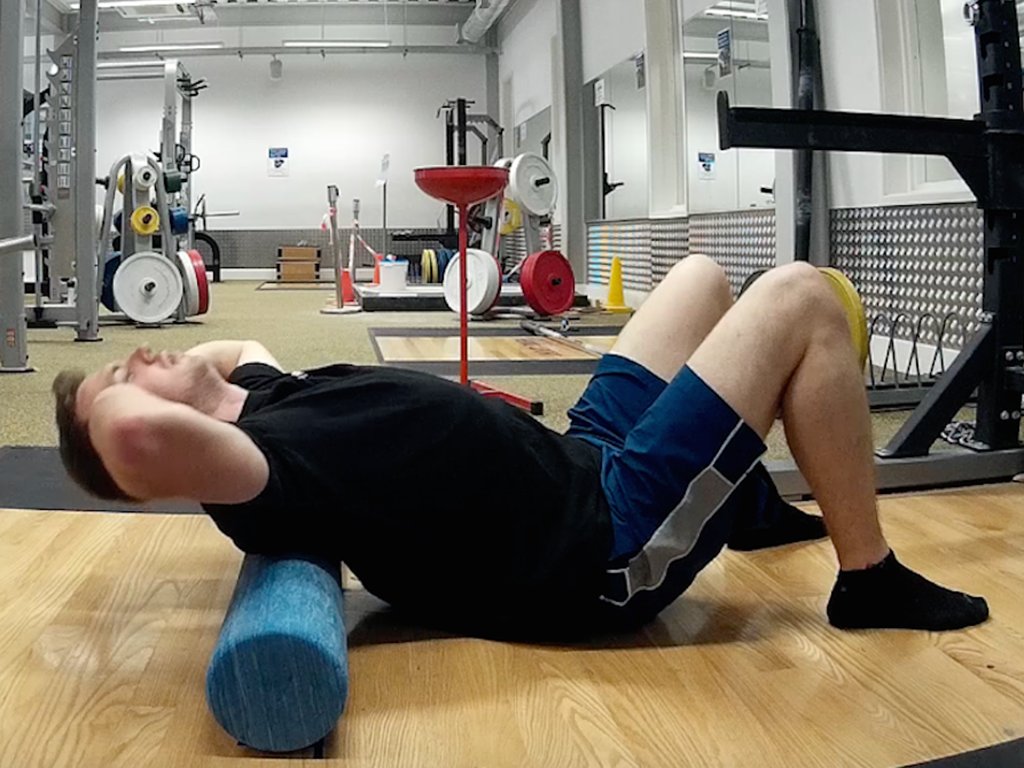
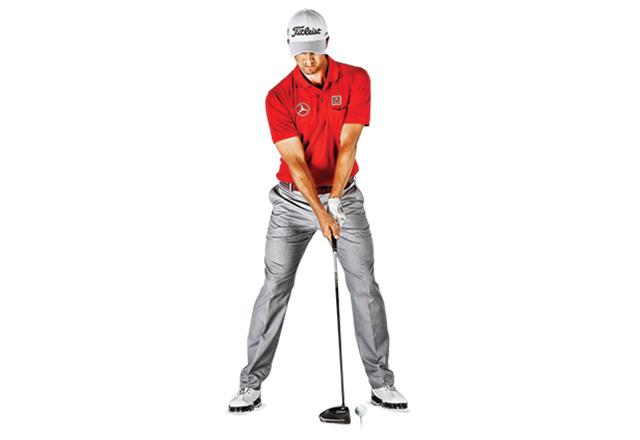












Tom
Apr 19, 2024 at 1:52 pm
How is it possible for the right shoulder not to be lower at address if the right hand is below the l eft on the club?
Loui Cuppari
Aug 13, 2016 at 5:34 pm
I’ve been working on scapula control and upper arm connection for about a year now and ball striking has improved considerably after 30 odd years of frustration. I believe setting the right scapula is the main key along with connection of the upper left arm.
I think getting this scapula/upper arm control or bracing/setting right is the swing of the future.
Allan
Feb 10, 2016 at 2:05 pm
I agree with Chris. It is not super clear to me what is correct and exactly why the scapula is having such a dramatic impact of club face at impact.
Lou
Mar 19, 2016 at 12:50 am
I believe it allows you to control the lift of the club and horizontal movement (thoracic rotation) using just your “scap muscles”….Doing this gives you a better awareness of the club face is throughout the swing because you won’t be using your hands for rerouting the club head into a proper inside path….the hands can do their job of just controlling the dynamic loft and face position (the handle)….
Mike
Jan 27, 2016 at 8:31 pm
I’ve been working out with the Golf fit regimen for a 6 months and it’s really helped my rotation and flexibility. I’m 63 and my game is improving from 22 to 15 handicap over this past year. I didn’t buy this tubing thingy because I think it’s over priced and you can do it with tubing loops effectively. I just want to say that they are knowledgeable and have helped my game.
Chris
Jan 25, 2016 at 10:48 am
If internal rotation is bad, does that mean the shoulder should be externally rotated at address or during the swing? It is unclear to me from the article what the correct movement is. Any elaboration? Thanks.
rob campbell
Jan 25, 2016 at 9:46 am
If a top 100 player has been working on “scapula stability” for 5 years and hasn’t got it right, why would any normal person think this idea is worth his time? You’ve taken a wrong turn.
Ne26
Jan 24, 2016 at 10:48 am
Sooooo turns out to be another article written by someone pushing their own product.
WRX is rolling in that advertising money.
Billy
Jan 25, 2016 at 8:49 am
Why not?? Seems like you don’t quite understand the article(which is quite interesting)… Lame response